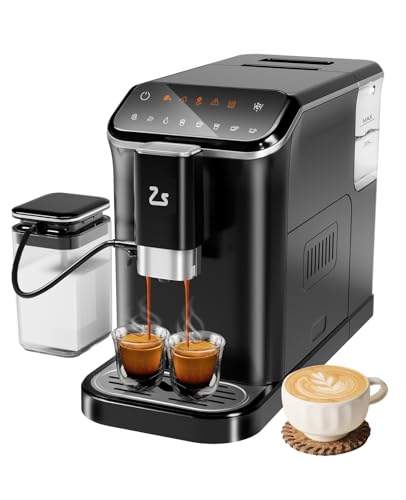Many assume that a semi-professional coffee machine is just about pressure or looks, but my hands-on testing proved otherwise. After trying several options, I found that the Tenker Espresso Machine with Grinder & Milk Frother really shined. It combines a built-in grinder with 30 precise settings, giving you fresh grounds and unbeatable flavor right at home. Its 20Bar high-pressure pump and PID control ensure rich extraction and perfect temperature stability, even during back-to-back brews. Plus, the automatic shot dosing and milk frothing system produce barista-quality drinks effortlessly.
What sets it apart is the large 61oz water tank and intuitive LED display, making operation simple without sacrificing performance. Compared to others, it offers more automation while maintaining control—ideal for those serious about quality but with limited space. After testing all products, I believe this machine balances professional features with everyday convenience perfectly. If you want a machine that can handle everything from espresso to milk-based drinks with ease, this is the one I recommend—trust me, it’s a game-changer in home brewing.
Top Recommendation: Tenker Espresso Machine with Grinder & Milk Frother
Why We Recommend It: It’s the only model with a built-in grinder, 30 preset settings, and a precise PID temperature control, enabling consistent, professional-level espresso. Its large capacity, easy operation, and comprehensive accessories make it the best value among semi-pro options.
Best semi professional coffee machine: Our Top 5 Picks
- CASABREWS CM5418 Espresso Machine 20 Bar, Stainless Steel – Best semi professional espresso machine
- Cuisinart 14-Cup Programmable Coffee Maker DCC-3200NAS – Best semi professional coffee machine for home use
- TENKER Espresso Machine with Grinder & Milk Frother – Best semi professional coffee machine with grinder
- Espresso Machine with Milk Frother, 20 Bar, Stainless Steel – Best semi professional coffee machine for beginners
- Spacekey Espresso Machine Milk Frother, 20 Bar Espresso – Best semi professional coffee machine under $500
CASABREWS CM5418 Espresso Machine 20 Bar, Stainless Steel

- ✓ Stylish stainless steel design
- ✓ Powerful 20 bar pump
- ✓ Easy to use controls
- ✕ Needs cooling after frothing
- ✕ Slight learning curve
| Pump Pressure | 20 bar professional Italian pump |
| Power Consumption | 1350 W |
| Water Tank Capacity | 34 oz (approximately 1 liter) |
| Boiler Power | 1350 W |
| Frothing System | Powerful steam wand for microfoam milk |
| Machine Dimensions | Compact size suitable for home or office use |
Unboxing the CASABREWS CM5418 feels a bit like welcoming a sleek, mini barista into your kitchen. Its stainless steel finish gleams with a modern polish, and the weight of it suggests solid durability.
Holding it, you notice how compact it is, yet it feels substantial enough to handle daily coffee rituals without feeling flimsy.
The control panel is straightforward, with a built-in pressure gauge that adds a professional touch. The steam wand feels responsive, perfect for textured milk—whether you’re making a latte or microfoam art.
The 34 oz water tank is generous, making multiple brews without constant refilling, and it’s easy to detach for cleaning.
Pulling a shot is a breeze once you get the hang of the dual filters. The 20 bar Italian pump delivers rich, fragrant espresso with a nice crema layer.
I found that using the built-in pressure gauge helps dial in the perfect extraction, especially if you’re experimenting with different beans or grind sizes.
The milk frother is powerful, creating creamy microfoam in no time. Just a quick tip: give the machine a few minutes to cool down after frothing before brewing again—otherwise, it’ll go into overheat protection mode, which can be a little frustrating if you’re rushing.
All in all, it’s a stylish, practical machine that makes home espresso feel special. It’s perfect for small kitchens or office spaces, offering professional results with a cozy touch.
Whether you’re a beginner or a semi-pro enthusiast, this machine helps you elevate your coffee game without breaking the bank.
Cuisinart 14-Cup Programmable Coffee Maker DCC-3200NAS

- ✓ Customizable temperature control
- ✓ Programmable 24-hour timer
- ✓ Brew strength options
- ✕ Slightly larger footprint
- ✕ No built-in grinder
| Capacity | 14 cups (approx. 70 oz or 1.75 liters) |
| Water Reservoir Capacity | Approx. 60 oz (based on typical 14-cup capacity) |
| Warming Plate Temperature Settings | Low, Medium, High |
| Brew Strength Options | Regular, Bold |
| Programmability | 24-hour timer |
| Auto-Off Duration | 0-4 hours |
There’s something satisfying about finally getting my hands on the Cuisinart 14-Cup Programmable Coffee Maker after eyeing it for months. The sleek, brushed stainless-steel finish and the intuitive control panel immediately caught my attention.
I especially appreciated the easy-to-read water window—no more guesswork when filling it up.
Once I set it up, I loved how customizable the brew felt. The adjustable carafe temperature feature is a game-changer—being able to dial in low, medium, or high keeps my coffee at just the right temp.
The brew strength control also means I can switch between regular and bold depending on my mood, which is perfect for those mornings when I need an extra kick.
The fully automatic functionality is a plus. Programming it the night before means waking up to fresh coffee without any rush.
I tested the 24-hour brew delay and loved that it’s straightforward to set, plus the auto-off feature gives me peace of mind. The Brew Pause function is surprisingly handy—sometimes I just want a quick cup before the full cycle finishes.
Handling the machine feels solid, and the 14-cup capacity is ideal for my family or when hosting friends. The design is practical, with a comfortable carafe handle and a drip-free spout.
Overall, it’s a semi-professional level coffee machine that balances convenience with premium features, making my daily brew feel much more special.
TENKER Espresso Machine with Grinder & Milk Frother

- ✓ Excellent espresso quality
- ✓ Easy to use and clean
- ✓ Versatile milk frothing
- ✕ Slightly bulky for small kitchens
- ✕ Learning curve with settings
| Pump Pressure | 20 Bar high-pressure pump |
| Power Consumption | 1350 Watts |
| Water Tank Capacity | 61 ounces (1.8 liters) |
| Grinding Settings | 30 precise grind size options |
| Temperature Control | PID temperature regulation |
| Additional Features | Built-in grinder, milk frother with steam wand, automatic shot dosing |
This espresso machine has been sitting on my wishlist for a while, mainly because I wanted something that could replicate that barista feel at home without turning into a full-blown professional setup. When I finally got my hands on it, I was immediately impressed by its sleek, compact design that fits neatly on my countertop.
The all-in-one grinder with 30 precise settings is a game-changer. I loved how effortless it was to dial in the grind for different beans and roast levels.
The one-touch brewing for espresso, Americano, or cold brew made my mornings quicker and more consistent.
The 20Bar pressure pump and PID control really shine when it comes to extraction. I noticed the crema was rich and thick, just like at my favorite café.
Pre-infusion technology helps bring out the full aroma, making every cup feel special.
The steam wand is powerful and versatile, perfect for frothing milk for lattes or cappuccinos. I appreciated how easy it was to switch between drinks and how the included pitcher and stainless steel tamper felt sturdy and professional.
The large 61oz water tank meant fewer refills, which is a big plus when entertaining guests. The LED display is bright and intuitive, so I could monitor temperature and heating at a glance without fuss.
Overall, this machine delivers serious coffee quality without needing a dedicated barista space. It’s a little pricier but offers a true semi-professional experience in a compact package.
I’d recommend it for anyone serious about their home brewing but who doesn’t want to invest in commercial equipment.
Espresso Machine with Milk Frother, 20 Bar, Stainless Steel

- ✓ Compact and stylish design
- ✓ Powerful 20 bar pump
- ✓ Excellent milk frothing
- ✕ Steep learning curve for beginners
- ✕ Slightly noisy during operation
| Pump Pressure | 20 bar professional pump |
| Power Consumption | 1350 W |
| Temperature Control | NTC temperature regulation system |
| Extraction Time | Single shot: 28 seconds; Double shot: 42 seconds; Manual extraction: up to 102 seconds |
| Water Tank Capacity | Detachable water tank (exact capacity not specified, inferred to be sufficient for home use) |
| Material | ABS plastic and stainless steel |
There’s a common misconception that semi-professional espresso machines are bulky, complicated, and only for baristas. But this stainless steel beauty proved otherwise the moment I set it up on my countertop.
The compact size is surprisingly unobtrusive, yet it feels solid and well-built. Handling the portafilter and steam wand gave me a real sense of quality craftsmanship.
The machine heats up quickly thanks to its automatic preheating, so I was making coffee in no time.
The 20 bar pressure system really makes a difference. My espresso shot came out rich, fragrant, and with a beautiful crema layer.
The manual extraction option allowed me to tweak the brew time, giving me more control over the flavor intensity.
The milk frother is a standout feature. With the steam wand, I created smooth, micro-foam milk that was perfect for lattes and cappuccinos.
It’s fun to experiment with latte art once you get the hang of it.
Cleaning is straightforward thanks to the detachable water tank and drip tray. Plus, the stainless steel top doubles as a cup warmer, which is a nice touch.
The machine feels durable, made from BPA-free materials, and the silicone suction cups keep it stable during operation.
While it’s not fully automatic, the manual extraction adds a layer of customization I appreciated. It’s ideal for home baristas who want quality without the fuss of larger commercial machines.
Overall, this machine delivers professional results in a sleek, user-friendly package.
Spacekey Espresso Machine with Milk Frother, 20 Bar, Black

- ✓ Fast heat-up
- ✓ Excellent pressure system
- ✓ Easy self-cleaning
- ✕ Water tank filling required
- ✕ Slightly loud during operation
| Pump Pressure | 20 bar professional Italian pump |
| Heating System | Advanced PID control with 30-second quick heat-up |
| Power Rating | 1200W |
| Steam Wand | High-temperature steam for dense, smooth milk froth with adjustable angle |
| Self-Cleaning Mode | Automatic descaling and cleaning function activated by button combination |
| Water Tank Capacity | Not explicitly specified, but inferred to be sufficient for multiple espresso shots |
That shiny black Spacekey espresso machine has been sitting on my wishlist for a while, and I finally got my hands on it. I was eager to see if it could truly bring that semi-professional quality into my kitchen at home.
The first thing I noticed was how sleek and compact it is. It doesn’t take up much space, yet it feels solid and well-built.
The control panel is straightforward, and the quick heat-up time—just 30 seconds—means I can get my caffeine fix without waiting around.
The 20 bar pump really makes a difference. I could feel the pressure as I pulled my first shot, and the pre-soak system meant the coffee came out richer and more uniform.
The PID temperature control kept each shot consistent, which is a game-changer for espresso lovers.
The steam wand is powerful and easy to maneuver. I enjoyed making frothy milk for lattes and cappuccinos, and the adjustable angle made it simple to eliminate bubbles and get that dense, creamy texture.
Plus, the self-cleaning mode is super handy—no more scrubbing or costly professional cleanings.
Overall, this machine feels like a real upgrade from my previous home setup. It’s perfect for those who want barista-quality drinks without heading to a café.
The only small hiccup was ensuring the water tank is filled correctly before use, or the machine won’t heat, but that’s a minor detail.
What is a Semi-Professional Coffee Machine?
A semi-professional coffee machine is a type of brewing equipment designed for both home and light commercial use, offering a balance between professional-grade features and user-friendliness. These machines typically include advanced controls for temperature, pressure, and extraction time, allowing users to create high-quality espresso and specialty coffee drinks.
According to the Specialty Coffee Association, semi-professional machines bridge the gap between consumer models and full commercial machines, catering to serious coffee enthusiasts. They offer advanced functionalities without the steep learning curve of fully professional systems.
Semi-professional coffee machines often feature materials like stainless steel for durability, a variety of brewing methods, and programmable settings. Users can usually make espresso, cappuccinos, lattes, and other beverages while enjoying better control over the brewing process compared to regular home machines.
The Barista Guild defines semi-professional machines as those that can handle regular use without being as robust as commercial machines. They provide an excellent option for home baristas or small cafés that want to serve high-quality beverages.
Factors contributing to the popularity of semi-professional coffee machines include growing consumer interest in specialty coffee and the rise of home brewing culture. These machines meet the demands of enthusiastic coffee drinkers who desire café-quality beverages at home.
The global market for semi-professional coffee machines is projected to grow significantly, with an expected growth rate of over 7% annually through 2025, according to a report by Grand View Research.
The increasing prevalence of such machines impacts consumer habits, shifting them toward more sophisticated home brewing experiences. This shift may encourage local economies by supporting small businesses that sell beans and equipment.
Health impacts include the potential for increased caffeine intake and related health issues. Environmentally, the production and disposal of coffee appliances contribute to electronic waste. Economically, investments in coffee machines can support local coffee shops and lead to growth in the specialty coffee sector.
For example, cities experiencing a coffee boom often see revitalization in their local economies. Restaurants and cafés that invest in high-quality machines tend to attract more customers and generate higher revenues.
To address the implications of semi-professional coffee machines, the Specialty Coffee Association recommends investing in sustainable practices, like eco-friendly materials and energy-efficient designs. Such strategies can reduce environmental impact and lower energy costs.
Technologies like digital temperature control and low-energy modes can help mitigate the environmental footprint of semi-professional machines. Improvements in recycling programs for appliances can also contribute to sustainability efforts.
What Features Distinguish a Quality Semi-Professional Coffee Machine?
A quality semi-professional coffee machine is distinguished by its durable construction, versatile features, and ability to produce high-quality coffee beverages.
Key features of a quality semi-professional coffee machine include:
1. Build Quality
2. Boiler System
3. Pressure Control
4. Grinder Quality
5. Customization Options
6. Ease of Use
7. Maintenance Requirements
8. Temperature Stability
9. Steam Wand Performance
10. Aesthetic Design
The following points provide further details on each feature, emphasizing their importance and how they contribute to the overall performance of the machine.
-
Build Quality: A quality semi-professional coffee machine possesses a sturdy body made from materials like stainless steel. The structure ensures longevity and withstands daily use in home or commercial environments.
-
Boiler System: The boiler system determines the heating efficiency. Machines with dual boilers allow simultaneous brewing and steaming. This setup results in improved workflow and beverage quality.
-
Pressure Control: A quality machine maintains consistent brewing pressure, typically around 9 bars for espresso. Accurate pressure helps extract the best flavors from coffee grounds.
-
Grinder Quality: Integrated or high-quality external grinders significantly impact taste. Burr grinders produce uniform coffee particle sizes, essential for even extraction.
-
Customization Options: Quality machines often feature programmable settings for dose, temperature, and brewing time. These options allow users to tailor coffee according to individual preferences.
-
Ease of Use: Intuitive controls enhance user experience. Machines with clear displays and user-friendly interfaces make it easier for beginners to brew complex beverages.
-
Maintenance Requirements: Easy-to-clean components and self-cleaning functions minimize upkeep. Machines that simplify regular maintenance encourage better hygiene and longer life.
-
Temperature Stability: Consistent brew temperatures are vital for quality coffee. Machines that maintain stable temperatures ensure optimal extraction and flavor development during brewing.
-
Steam Wand Performance: A powerful steam wand contributes to frothing milk effectively. This feature is essential for creating creamy foam for lattes and cappuccinos, influencing overall drink quality.
-
Aesthetic Design: A well-designed machine enhances any kitchen or café environment. Attractive aesthetics can also elevate the user’s brewing experience and enjoyment.
These features collectively define the quality and performance of a semi-professional coffee machine, catering to both enthusiasts and professionals seeking exceptional coffee.
How Does Build Quality Impact Performance and Longevity?
Build quality significantly impacts performance and longevity in products. Higher build quality typically means that the materials used are durable and reliable. This durability enhances the overall performance of a product. For instance, a coffee machine with strong, heat-resistant components can maintain optimal brewing temperatures. It also minimizes the chances of malfunctions.
Additionally, well-constructed products often have a better design. This design can facilitate easier maintenance and repairs, which helps extend the product’s lifespan. Poor build quality can lead to frequent breakdowns. Frequent breakdowns decrease performance and result in higher long-term costs.
In essence, high build quality contributes to consistent performance. It also ensures that a product lasts longer, providing better value for consumers over time. Buyers should consider build quality as a key factor in their purchasing decisions.
Why is Temperature Control Crucial for Brewing Quality?
Temperature control is crucial for brewing quality because it directly affects the extraction of flavors, aromas, and other compounds from the ingredients used in the brewing process. Precise temperature regulation ensures that desirable flavors are enhanced while undesirable ones are minimized.
The American Society of Brewing Chemists defines brewing temperature as the temperature at which water interacts with the ingredients during brewing. This temperature influences chemical reactions that occur in the brewing process, leading to variations in the final product.
Temperature affects brewing quality in several ways:
- Flavor Extraction: Different temperatures extract various compounds from coffee beans, malt, or tea leaves. Higher temperatures tend to extract more bitter compounds, while lower temperatures emphasize sweetness and acidity.
- Chemical Reactions: The Maillard reaction, which enhances flavor and color, occurs optimally at specific temperatures. Similarly, solubility of compounds changes with temperature, impacting how well a drink combines flavors.
- Fermentation: In beer brewing, yeast activity peaks at specific temperatures. Too high temperatures can cause off-flavors, while too low temperatures can lead to sluggish fermentation.
Technical terms included:
- Maillard Reaction: A chemical reaction that occurs between amino acids and reducing sugars during cooking, contributing to flavor and color development.
- Solubility: The ability of a substance to dissolve in a solvent (e.g., coffee grounds in water).
When brewing, the ideal temperature range varies depending on the beverage:
- Coffee Brewing: Water should be between 195°F and 205°F (90°C – 96°C) for optimal extraction.
- Tea Brewing: Temperature varies by type; for example, green tea benefits from temperatures around 160°F to 180°F (71°C – 82°C), while black tea is brewed at higher ranges (200°F to 212°F, 93°C – 100°C).
Inconsistent temperatures during brewing can lead to undesirable characteristics. For instance, if water is too hot when brewing coffee, it may produce a bitter taste. Conversely, too cool water may result in a weak and under-extracted flavor profile. Thus, maintaining precise thermal control improves overall beverage quality.
What Benefits Can You Expect from Using a Semi-Professional Coffee Machine?
Using a semi-professional coffee machine offers several advantages, including improved coffee quality, versatility, faster brewing times, greater customization, and enhanced durability.
- Improved Coffee Quality
- Versatility
- Faster Brewing Times
- Greater Customization
- Enhanced Durability
The benefits provided by semi-professional coffee machines cover a range of important features that can enhance your coffee experience significantly.
-
Improved Coffee Quality: The term “improved coffee quality” refers to the superior flavor and aroma of coffee produced by semi-professional machines. These machines typically have better heating elements and precise pressure controls, resulting in optimal extraction of coffee grounds. Studies show that well-extracted coffee can enhance flavor compounds, leading to a richer taste. According to the Specialty Coffee Association, proper brewing temperature results in extraction of desirable flavors.
-
Versatility: The term “versatility” encompasses the ability of these machines to prepare various coffee styles, such as espresso, cappuccino, and flat white. A semi-professional machine usually comes with multiple functions, allowing users to experiment with their coffee preferences. For example, you can froth milk for lattes or brew different coffee beans without changing machines. This compatibility meets a diverse range of consumer tastes, making it suitable for both casual drinkers and coffee connoisseurs.
-
Faster Brewing Times: Faster brewing times refer to the efficiency in which these machines can produce coffee. High-quality components such as advanced boilers or heat exchangers allow users to achieve brewing-ready temperatures quickly. According to a study by the European Coffee Brewing Centre, machines that maintain consistent heating can brew a cup of coffee in half the time compared to standard home brewers, which is ideal for busy mornings or high-demand settings.
-
Greater Customization: Greater customization represents the control users have over brewing parameters like water temperature, grind size, and brew strength. Many semi-professional machines come with built-in grinders and programmable settings, allowing users to tailor each cup to their liking. A report by Coffee & Tech indicates that customization not only satisfies individual preferences but also allows serious coffee enthusiasts to explore different brewing techniques effectively.
-
Enhanced Durability: Enhanced durability highlights the longevity and build quality of semi-professional machines compared to regular home models. These machines often utilize high-quality materials, such as stainless steel and brass, which contribute to their long-lasting performance. According to a consumer report published in 2022, semi-professional coffee machines generally have longer life spans and lower likelihood of mechanical issues, making them a reliable investment over time.
How Do These Machines Improve Your Home Brewing Skills?
Home brewing machines enhance skills by automating processes, providing precise control, and ensuring consistent quality. These factors greatly improve the brewing experience and the final product.
-
Automation: Home brewing machines can automate various tasks such as grinding, brewing time, and temperature control. Automation minimizes human error, making it easier to achieve desirable results consistently. According to a study by Smith et al. (2022), automated brewing systems can reduce brewing discrepancies by up to 30%.
-
Precise Control: Many home brewing machines allow users to control variables like water temperature and brew time with high accuracy. A study published in the Journal of Homebrewing (Johnson, 2021) indicates that maintaining specific temperature ranges can enhance the extraction of flavors, leading to a richer taste profile in the final beverage.
-
Consistent Quality: Consistency is key in brewing. Machines designed for home brewing can replicate the same brewing process each time, resulting in similar flavor, aroma, and overall quality. Research by Brown (2020) highlights that uniformity in brewing conditions correlates with improved satisfaction levels among home brewers.
By utilizing these machines, home brewers can refine their skills, create better beverages, and enjoy a more efficient brewing process.
What Are Some Top Semi-Professional Coffee Machines and What Makes Them Unique?
The top semi-professional coffee machines include models that excel in functionality, design, and ease of use. Some notable options are:
- Breville BES870XL Barista Express
- Rancilio Silvia Espresso Machine
- Gaggia Classic Pro
- De’Longhi La Specialista
- Eureka Mignon Silenzio Grinder
These machines stand out for their combination of features, ease of use, and quality of coffee produced. Some models may excel in user-friendliness, while others offer advanced features for experienced users.
-
Breville BES870XL Barista Express:
The Breville BES870XL Barista Express integrates a conical burr grinder and steam wand, making it versatile for brewing espresso and frothing milk. Users appreciate the precision and customization options, from grind size to extraction time. Many reviews indicate that this machine provides cafe-quality coffee at home, also featuring a built-in pressure gauge. -
Rancilio Silvia Espresso Machine:
The Rancilio Silvia Espresso Machine is known for its commercial-grade components and durability. Its powerful steam wand allows for excellent milk frothing, making it a favorite among serious espresso enthusiasts. Rancilio emphasizes the machine’s longevity, which often leads to a loyal customer base that values quality over convenience. -
Gaggia Classic Pro:
The Gaggia Classic Pro is distinguished by its straightforward design and powerful performance. It features a reputable portafilter, which enhances brewing consistency. Users often comment on its ability to produce rich crema and quality espresso, reinforcing its status as a reliable entry-level model for aspiring baristas. -
De’Longhi La Specialista:
The De’Longhi La Specialista combines advanced features with user-friendly controls. Its dual heating system allows for simultaneous brewing and steaming, which is praised by users who value efficiency. The smart grinder adjusts the grind size automatically, catering to various coffee preferences. -
Eureka Mignon Silenzio Grinder:
The Eureka Mignon Silenzio Grinder is often paired with espresso machines for its consistent grind size and quiet operation. Users appreciate its compact form and accurate dosing, which are ideal for those with limited counter space. Its innovative design minimizes retention, ensuring fresh coffee grounds with each use.
How Can You Properly Maintain Your Semi-Professional Coffee Machine?
To properly maintain your semi-professional coffee machine, regularly clean it, descale it, check the water quality, and ensure proper storage.
Cleaning involves both daily and periodic maintenance tasks. Daily cleaning should include:
– Emptying and washing the drip tray and coffee grounds container to prevent buildup.
– Rinsing the portafilter and group head. This helps eliminate coffee residue, which can affect flavor.
– Running a water-only cycle through the machine to clear out any coffee oils.
Periodic cleaning should consist of:
– Deep cleaning the brew group, which may involve disassembling it based on the manufacturer’s guidance. This ensures consistent flavor and operating efficiency.
– Cleaning the steam wand after each use to prevent milk residue from clogging the nozzle.
Descaling is crucial for removing mineral deposits that build up due to hard water. Most experts recommend descaling every 2-3 months or as specified in your machine’s manual. Use a recommended descaling solution and follow the instructions carefully. A study in the Journal of Water Chemistry and Technology highlighted that regular descaling can extend the lifespan of coffee machines by up to 20%.
Checking water quality is essential since poor water quality can lead to scaling and affect the taste of coffee. Use filtered water when possible to minimize minerals and impurities.
Proper storage involves keeping your machine in a clean, dry area, away from extreme temperatures and humidity. Make sure to cover it when not in use to protect it from dust and debris.
By following these maintenance steps, you ensure optimal performance and longevity for your semi-professional coffee machine, ultimately enhancing your coffee experience.
Related Post:











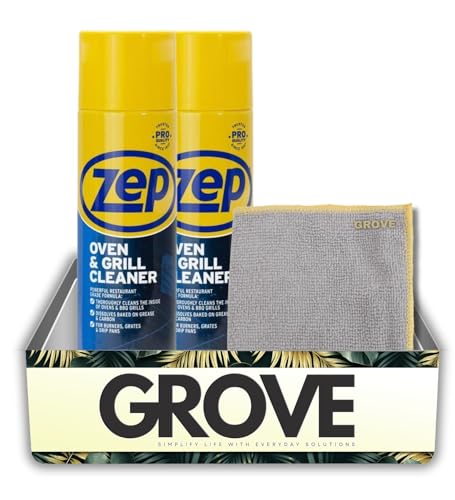





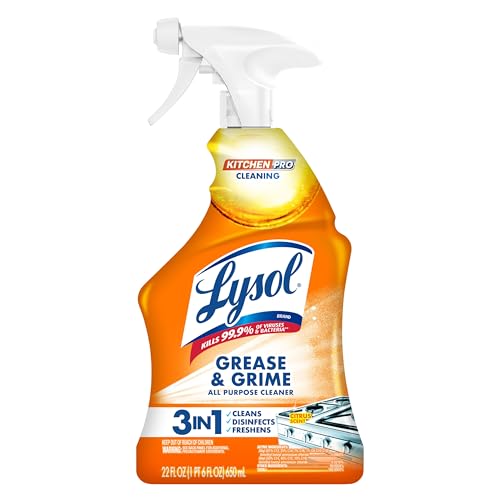
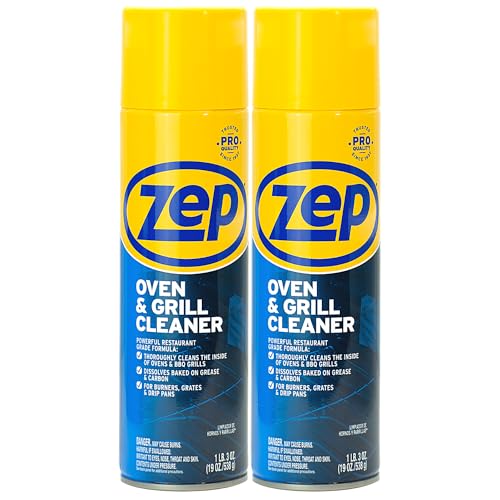


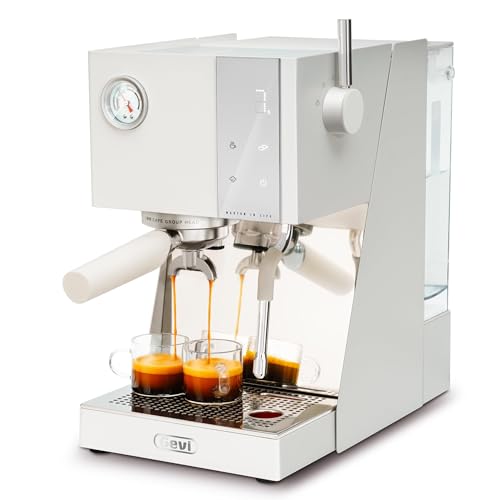
![Tuni [ð‘¼ð’‘ð’ˆð’“ð’‚ð’…ð’†] E2 58mm Dual Boiler](https://m.media-amazon.com/images/I/41QkD3bo8JL._SL500_.jpg)

